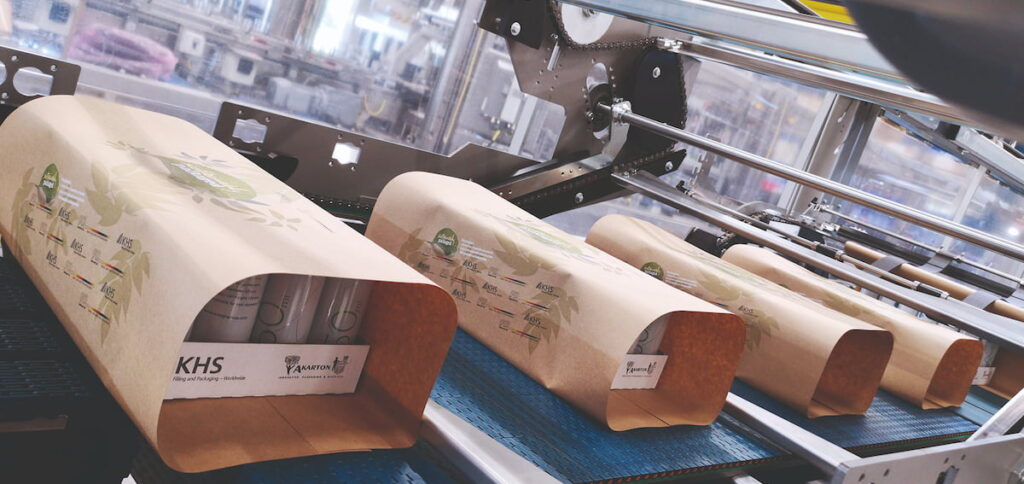The potential of sustainable packaging

It is not only sustainable production that is increasingly coming into focus within the beverage and food industry: especially among manufacturers of non-alcoholic beverages, the focus is increasingly on the sustainability potential of packaging.
While the brewing process offers a lot of opportunity to optimize energy efficiency, the manufacturers of non-alcoholic soft drinks often focus on the sustainability potential of packaging. In light of the EU Plastics Directive, there is a need to significantly curb the volume of packaging waste. This also applies to food manufacturers and the beverage industry. A question on which all manufacturers in the beverage industry are focusing is, “how can the use of plastic be minimized?”
Depending on the specifications of the bottler, the bottle design can be created using individual Virgin PET/recycled material mixtures. Bottle-to-bottle recycling systems with modules for the washing or decontamination process prepare used PET bottles for renewed use in food and beverage applications.

Asahi Beverages is an example of how the availability of raw material PET is becoming more and more interesting to beverage manufacturers. The company is taking part in a joint venture to create a recycling system for PET in Australia with a recycling capacity of one billion 600-ml PET bottles a year and an annual production of 20,000 tons recycled material. The value of the total investment is around $45 million.
PET – The one and only?
In light of this competition, how can alternative plastics take hold in the market? Bio PET as a blend, based on the residual material from sugar cane or sugarbeet production, already sees a lot of use. According to the Institute for Bioplastics and Biocomposites at Hannover University, the global production capacity for this material will increase from 1.4 million tons (2018) to 2.2 million tons by 2023 by changing the strategies of large soft drinks manufacturers.

Another exciting question to ponder is what significance new plastic variations, like the platform chemical FDCA (furandicarboxylic acid) for the plastic PEF (polyethylene furanoate), will take on. This makes available materials created using renewable raw materials derived from residual agricultural industry materials or wood waste, and demonstrates significantly improved barrier properties compared to traditional PET. At the same time, plastic alternatives are also gaining awareness on the beverage market.
The innovative power of the industry is already evident in bottle variants made of paper and an inner layer of foil made of bioplastic that is to be used for the likes of spirits. Machine manufacturers are also opening up new opportunities for paper as a packaging material for secondary packaging: Why not wrap a can tray with paper? Or equip a six-pack of PET mineral water with a cardboard grip and eliminate the wrap-around sheet covering altogether?
Sustainability is still a hot topic
Even fundamental discussions remain relevant: Has recycling design been learned? What effect does the EU tax on non-recycled plastic waste have on the beverage industry? How will the environmental balance of packaging change if plastic is replaced with paper? And last but not least, what role can chemical recycling play in this situation?
The world’s leading trade fair, drinktec, has its finger on the pulse by putting this topic in a top position as the future direction of the industry. In Munich, from September 12 to 16, 2022, drinktec will offer a comprehensive information platform on the focal point of the future, sustainability in the beverage industry.
The term plastic is the colloquial name for plastics of all kinds. According to the EU Commission, Europe generates 25 million tons of plastic waste per year. For this reason, the EU has launched a plastic strategy with corresponding regulations. From 2030, for example, all plastic bottles are to consist of at least 30 percent recycled material.
